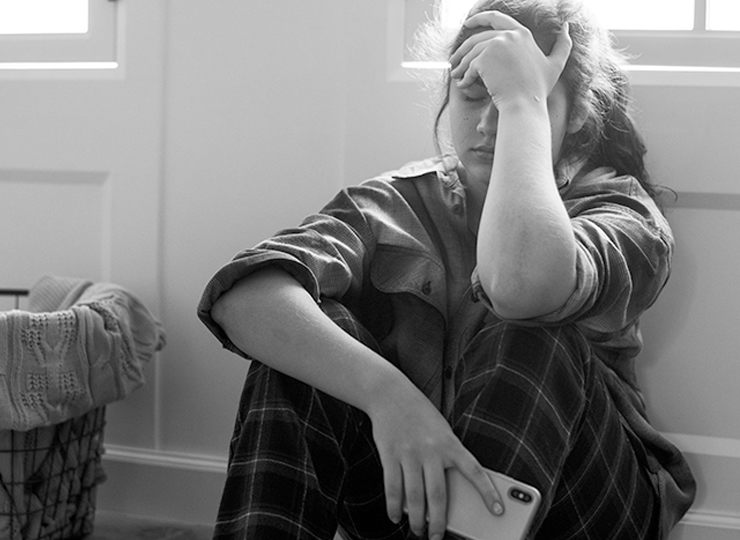Post-Traumatic Stress Disorder (PTSD) is a well-known mental health condition that develops after a person experiences or witnesses a traumatic event. However, there is another form of trauma-related disorder called Complex PTSD (C-PTSD), which arises from prolonged or repeated trauma. While these conditions share some similarities, they are distinct in their causes, symptoms, and treatments. This article aims to explain the differences between PTSD and Complex PTSD in a clear and approachable way.
 What is PTSD?
What is PTSD?
PTSD is a mental health condition that occurs in response to a specific traumatic event. This could include:
– A car accident
– Military combat
– A natural disaster
– Physical or sexual assault
Common Symptoms of PTSD
PTSD symptoms fall into four main categories:
- Intrusive Thoughts: Flashbacks, nightmares, or distressing memories of the traumatic event.
- Avoidance: Steering clear of people, places, or activities that remind you of the trauma.
- Negative Changes in Mood or Thinking: Feelings of guilt, hopelessness, or detachment from others.
- Hyperarousal: Being easily startled, having trouble sleeping, or experiencing irritability and anger.
According to the National Center for PTSD, around 6% of adults in the United States will experience PTSD at some point in their lives.
What is Complex PTSD?
Complex PTSD (C-PTSD) is a condition that arises from repeated or prolonged exposure to traumatic situations, often during early life. Unlike PTSD, which typically stems from a single traumatic event, C-PTSD is associated with ongoing trauma such as:
– Chronic abuse or neglect
– Human trafficking
– Domestic violence
– Being held captive
How is C-PTSD Different from PTSD?
While C-PTSD shares many of the core symptoms of PTSD, it includes additional features that reflect the impact of long-term trauma.
Additional Symptoms of C-PTSD:
- Emotional Dysregulation: Intense and persistent feelings of sadness, anger, or fear that are difficult to control.
- Negative Self-Perception: Deep feelings of shame, guilt, or worthlessness.
- Difficulty Maintaining Relationships: Problems trusting others, feeling disconnected, or withdrawing from social interactions.
- 4. Physical Symptoms: Chronic pain, fatigue, or other stress-related health issues.
Why Does Long-Term Trauma Cause C-PTSD?
Prolonged trauma affects the brain differently than a single traumatic event. Over time, repeated exposure to stress can:
– Overactivate the amygdala (responsible for fear response)
– Suppress the prefrontal cortex (involved in decision-making and emotional regulation)
– Shrink the hippocampus (important for memory and distinguishing past from present)
These changes make it harder for individuals with C-PTSD to regulate emotions and cope with everyday stress.
Key Differences Between PTSD and C-PTSD
| Feature | PTSD | Complex PTSD |
|——————————-|——————————————-|—————————————–|
| Cause | Single traumatic event | Repeated/prolonged trauma |
| Emotional Symptoms | Fear, anxiety, anger | Emotional dysregulation, chronic sadness|
| Self-Perception | May remain intact | Often includes deep shame or worthlessness|
| Relationships | May avoid certain relationships | Difficulty forming or maintaining relationships |
| Physical Health | Often unaffected | Chronic health issues may arise
Diagnosis
Both PTSD and C-PTSD are diagnosed based on symptoms and history of trauma. Mental health professionals use tools like the Diagnostic and Statistical Manual of Mental Disorders (DSM-5) for PTSD, while C-PTSD is recognized in the International Classification of Diseases (ICD-11).
Challenges in Diagnosis
Diagnosing C-PTSD can be more complex because it often coexists with other mental health issues, such as depression, anxiety, or borderline personality disorder (BPD). Misdiagnosis is common, so it’s crucial to work with a trauma-informed professional.
Treatment Options
While PTSD and C-PTSD require different approaches, both conditions are treatable. Early intervention and tailored care can significantly improve quality of life.
Treatment for PTSD
- Cognitive Behavioral Therapy (CBT): Helps individuals challenge and change unhelpful thoughts related to trauma.
- Exposure Therapy: Gradually reduces fear and avoidance by confronting trauma-related triggers in a safe setting.
- Medications: Antidepressants, such as selective serotonin reuptake inhibitors (SSRIs), are often prescribed.
Treatment for C-PTSD
- Trauma-Focused Therapy: Combines elements of CBT with a focus on processing prolonged trauma.
- Dialectical Behavior Therapy (DBT): Teaches skills for emotional regulation and managing intense emotions.
- Group Therapy: Provides a supportive environment to share experiences and learn from others.
- Somatic Therapy: Focuses on reconnecting with the body and addressing physical symptoms of trauma.
Self-Help and Coping Strategies
In addition to professional treatment, self-care can play a vital role in managing symptoms of PTSD and C-PTSD:
– Practice Mindfulness: Techniques like meditation or deep breathing can reduce stress and improve emotional regulation.
– Establish a Routine: Consistent daily routines can create a sense of stability.
– Seek Support: Talking to trusted friends or joining support groups can reduce feelings of isolation.
– Engage in Physical Activity: Exercise is known to improve mood and reduce symptoms of anxiety.
Final Thoughts
Understanding the differences between PTSD and Complex PTSD is essential for proper diagnosis and treatment. While both conditions can be life-altering, recovery is possible with the right combination of therapy, medication, and self-care. If you or someone you know is struggling with symptoms of trauma, reaching out for help is the first step toward healing.
Remember, trauma doesn’t define who you are—with support and time, it is possible to reclaim your life and find peace.
